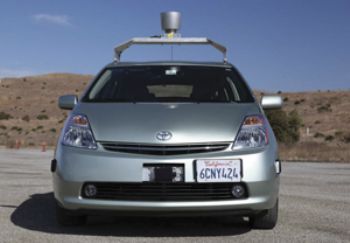
In a ‘blog’ post published on 28 April, Internet search-engine giant Google said that it has made “progress” on its self-driving car and is now “more optimistic” about its ambition to develop “a vehicle that operates without human intervention”.
The blog — written by Chris Urmson, head of Google’s self-driving car project — continued: “Since the last update in August 2012, we have logged thousands of miles on the streets of our home-town — Mountain View, California — to refine the software needed for autonomous vehicles.”
Mr Urmson said that Google, which has been testing self-driving cars since 2010, has “overcome some of the obstacles in urban driving. A mile of city driving is much more complex than a mile of freeway driving, with hundreds of different objects moving according to different rules of the road in a small area.
“We’ve improved our software so that it can detect hundreds of distinct objects simultaneously — pedestrians, buses, a ‘stop’ sign held up by a crossing guard or a cyclist making gestures that indicate a possible turn. A self-driving vehicle can pay attention to all of these things in a way that a human can’t — and it never gets tired or distracted.
“As it turns out, what looks chaotic and random to the human eye is actually fairly predictable to a computer. We still have lots of problems to solve, but thousands of situations on city streets that would have stumped us two years ago can now be navigated autonomously.
Our vehicles have logged nearly 700,000 autonomous miles; with every passing mile, we’re growing more optimistic that we’re heading towards an achievable goal — a vehicle that operates without human intervention.”